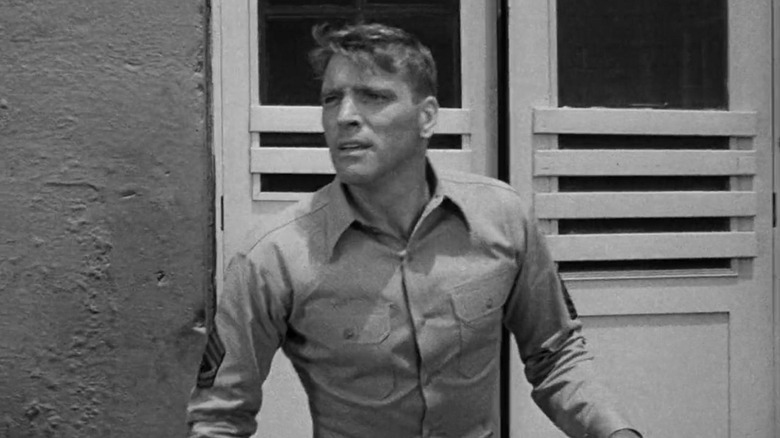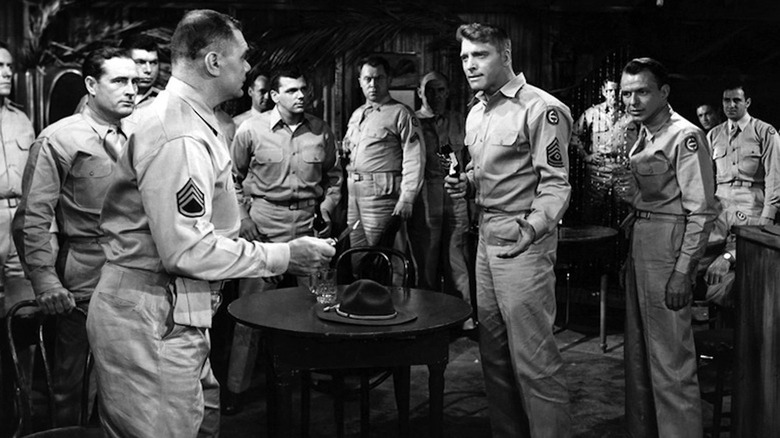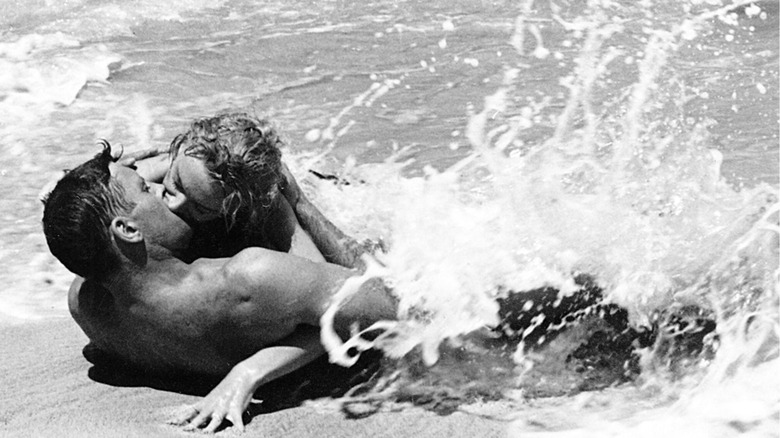One Classic Movie Was A Huge Hit Without Advertising – Thanks To One Shrewd Studio Move
We may receive a commission on purchases made from links.
It often feels like movie marketing is an unimaginative, flood-the-zone proposition in our age of pre-sold, IP-driven blockbusters. But as we've recently been reminded via the carefully crafted ad campaigns for smaller genre efforts like "MaXXXine" and "Longlegs" (and, to a degree, Warner Bros' failed "Yellowstone"-tinged salesmanship on "Horizon: An American Saga — Chapter 1"), marketing departments are still a vital part of the business. How you sell each movie has certainly changed with the evolution of the media landscape, but even the biggest films will always need some kind of push. After all, audiences aren't likely to flock to a movie that has zero presence in the marketplace.
There really isn't an exception to this rule. The closest you're liable to find might be the August 5, 1953 release of Fred Zinnemann's "From Here to Eternity." Based on James Jones' critically acclaimed novel set at the U.S. Army's Schofield Barracks in Hawaii just prior to the Japanese assault on Pearl Harbor, the film wasn't exactly made in a vacuum. Burt Lancaster was a major star at the time, and while Frank Sinatra was in a significant career slump when it came out, he was very much a marquee name.
But moviegoers still needed to know when they could see "From Here to Eternity." There were also those who believed Columbia Pictures needed to soften the film's rough edges; World War II might've been eight years in the rearview, but most Americans weren't comfortable with art that depicted the military in a less-than-reverential light.
Columbia's infamous honcho, Harry Cohn (a real creep who sexually harassed many of the female stars in his employ), was well aware of these concerns, and responded by undertaking a bold marketing strategy. There would be no advance marketing. Did Cohn's gambit work? It did. Smashingly.
A single advertisement for a single theater on opening day
In Jeanine Basinger and Sam Wasson's "Hollywood: The Oral History," the authors quote an old interview with Zinnemann wherein the director marveled at Cohn's old-school showmanship. According to Zinnemann, the very notion of making "From Here to Eternity" in the midst of the red-baiting McCarthy era seemed foolish. "People called it Harry Cohn's Folly," recalled the filmmaker.
Cohn didn't care, and he doubled down on his gamble by debuting the movie at New York City's Capitol Theatre in August. As for marketing, there would be virtually none. As Zinnemann put it:
"Now, this was in 1953, and there was no such thing as air-conditioning. And New York in August was a red-hot box, and nobody in their right mind would have opened a picture that month. In August. And then he said, 'There's to be no publicity, no advertising, except one full-page ad in the Times, which I will sign as president of Columbia, recommending everybody see the film.' And people really thought he was out of his mind."
On the film's opening day, Zinnemann was prepared for disaster. Then he received a wholly unexpected phone call from a movie star he'd never met in his life.
From Here to Eternity was a film so good you could smell it
At around eight o'clock that evening, Zinnemann's phone rang. It was Marlene Dietrich. The two were complete strangers, but that didn't matter. She had spectacular news. Per Zinnemann:
"[S]he called and said, 'You might like to know that people are standing in line all around the block, in spite of all the heat and everything else,' and I said, 'How is that possible? There's been no publicity.' And she said, 'They smell it.' Harry knew."
Four weeks later, "From Here to Eternity" expanded to theaters beyond New York City and became the number one film in the country. It would wind up being the second highest grossing movie of 1953 behind Harry Koster's CinemaScope biblical epic "The Robe." The film went on to earn 13 Academy Award nominations, winning eight (including Zinnemann's first Oscar for Best Director). As for the public, they overwhelmingly adored the film. The scene in which Lancaster and Deborah Kerr tumble to the beach and lock lips as the surf rises up around them remains one of the most iconic moments in the history of the medium.
And it all started with next to no fanfare on a hot August day in Manhattan –- something that was as unthinkable in 1953 as would be in 2024.


